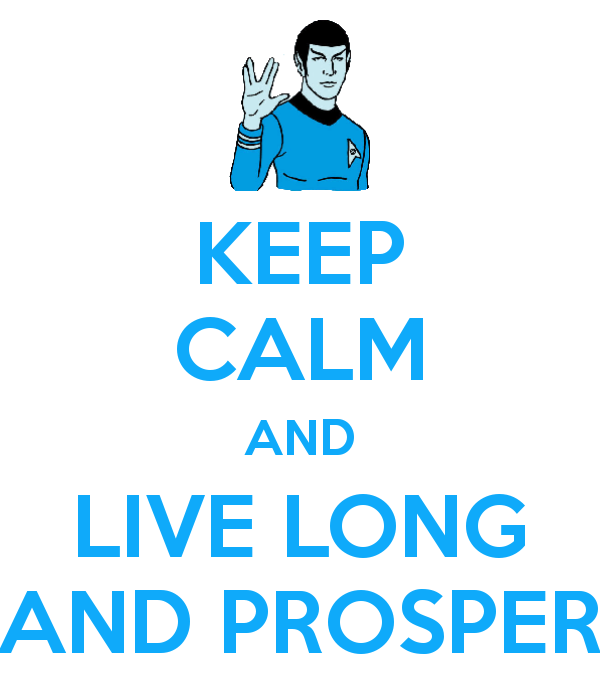
Friday Fun Blog: Live Long and Prosper Edition
February 27, 2015
UPDATE: 3 DDoS Misconceptions That Could Leave You Vulnerable
March 4, 2015Editor’s Note: The original article (posted below the line) was published on August 06, 2013. An update on the subject matter was sorely needed….
It’s been a good two years since we updated our readers on big data, so let’s see what’s happened since then.
Nothing.
Big data still means big data. If you know what big data means and how to use it—good for you. If you don’t, then you’re in the same boat as many of us.
Big data has slowly become a buzzword—something that gets said repeatedly but has an ambiguous meaning.
On the surface, big data means storing large amounts of data and playing connect the dots to glean a trend through a specific algorithm. It’s called “big data” because there’s too much information for human beings to sift through. It’s like trying to find the grain of salt on the beach.
But What Does Big Data Really Mean?
Our friends at Wikipedia can bore you for ages about the topic, and our more focused friends at arstechnica can give you a more reader friendly explanation, but ours is simple: Big data is what computers were designed for in the first place.
Throw away the endless files and papers and store all the information on a machine where that machine can analyze the information while you go do something else.
A great example of how big data is used is a basic Google search. Imagine typing an inquiry and waiting for some person at Google to sift through endless pages of the internet until he/she gets back to you with your answer a good week or so later. Instead, the answer is instantaneous because Google’s algorithms have already done all the work. Brilliant!
How Can You Use Big Data?
But on a smaller scale, let’s say your business, how is big data applicable. Your business most likely does not have the resources that Google has. Instead, maybe you own a law firm and you want to analyze which stipulation in a lawsuit lends well or worse during trial. That would give you a better idea of whether or not to take (and win) the case.
You have all this data lying around, it’s up to you to sort through all the variables. Or rather, it’s up to you to find the correct software to do that for you. Maybe take a dedicated server (and you’ll need one with all the data you’ll be analyzing) and store all the “big data” on there while your software does the work for you. That’s it. There’s plenty of software out there to suit your specific needs.
Now get out there and use big data to get big results.
Original:
Big Data – two words that get tossed around quite feverishly yet there’s only a small group of people who actually know how to harness it, the right way.
Over the last couple of years, you may have heard the words “Big Data” pop up in feverish boardroom meetings or a variety of tech-savvy publications. However, there are only a handful of people in the industry who have recognized the underlying potential and implications of big data as a business tool.
Big data is simply the combination of structured and unstructured data aggregated by a company. It has no inherent business value of its own, and its true value is only created after extensive evaluation and analysis.
The real value of big data lies in your ability to zero down on the information that will give you essential consumer insights regarding your products. This will allow you to optimize your organization’s business strategies in order to target consumer needs more accurately.
What Drives the Consumer Life Cycle?
The innovation of big data is a key facilitator of the new marketing paradigm that encourages organizations to abandon conventional, monotonous marketing models in favor of customized and strategic plans. Big data allows you to harness essential results across the whole spectrum of the standard customer life cycle, which allows them to understand their success and shortcomings in each field.
The objective of every marketing model is to achieve brand ubiquity across all the organizational channels utilized to market your products. Big data essentially gives you the most accurate insights into the mindset of your consumers that will help you accordingly tweak your strategies to target your user base perfectly and attract a lot more customers.;
Even if you own a company marketing something highly technical and mundane like gps heavy machinery, you can still devise a creative engagement plan to captivate the attention of your target audience.
Harnessing Customer Intelligence
Consumer intelligence is what we classify as the data aggregated by your company after a phase of customer interaction. Each campaign launched by your organization generates a massive quantity of data.
However, the quality of data is what really matters at the end of the day. The true value of customer intelligence is determined by the depth of the insights it gives you for promoting your brand during every possible stage of your marketing campaign.
This helps you draw out better marketing strategies that target and serve each segment of your user base and ensure all their needs are adequately met with.
Consumer Life Cycle
The consumer life cycle is the driving force of any big data engine, and in turn, the power of the big data engine is what helps your company’s marketing campaign hit a home run. Hence, it is important to prioritize the right data to extract and analyze rather than be drowned in a sea of irrelevant information.
A well-implemented data engine can help you build the perfect bridge of harmony that you always dreamed of between your customers and your organization.

